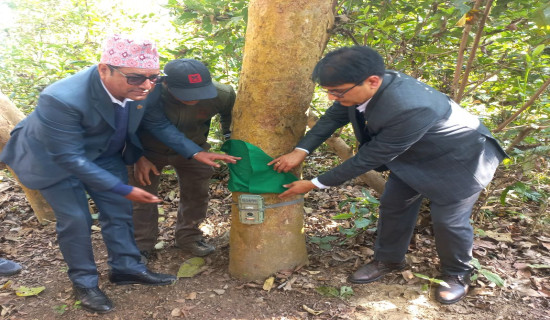- Tuesday, 16 December 2025
Govt Has No Option But To Deliver
The Prime Minister and the senior coalition party leaders commit to working towards achieving transformative changes in the governance and development of the country. Obviously, for the present Nepali Congress and UML combined coalition government headed by KP Sharma Oli that had been brought into shape during the previous months, there are no alternatives but to work and deliver. It has been a much argued rapprochement of two dominant political parties that occupy more than two-thirds space in the Nepali politics and remained mutually estranged to each other.
However, in order to act and deliver results, there would need a shift in the working patterns and style of the coalition government. The party leaders should shun aggrandising their partisan turfs and interests. In case leaders keep rousing their rabbles and harp on their own interests, the coalition government will get lost in a maze of tall promises and rhetoric without any substantive outcomes to its credit. Of course, execution of many infrastructural schemes and efficient delivery of public goods and services have been promised on behalf of the government but these will have no value and importance should these go unrealised and unimplemented.
Basic aspirations
Prime Minister KP Sharma Oli seems interested in seeking results from his cabinet colleagues by binding them into the terms of contract. In fact, the present government is under an obligation act palpably at any cost. It needs to perform to inspire hope and optimism in the disenchanted masses. When a government makes tall promises and fails to deliver to meet the basic aspirations of the people, popular disappointments and disenchantments grow and manifest into public outbursts. In fact, the government has been anticipated to target the basic day-to-day problems, inconveniences and hardships faced by the people.
To demonstrate the evidence of its seriousness and performance efficacy, the government should first target to accelerate the process of completing the major roads including ones linking the capital city with the rest of the country as their decrepit conditions are making communication and transportation difficult. Negative public perception and distrust would be ameliorated once the government focuses to complete the dilapidated roads soon. Furthermore, the Kathmandu roads and city ambience looks much more ravaged, muddy and deteriorated. The city transportation is in a disarray and mismanaged, rendering the commuting very difficult and risky.
Needless to say, the nation had opted for federal reorganisation of the state for ensuring participatory sub-national governance and development so that the people at the far flung and remote areas of the country could own up and align with the process of democracy building. But this transformative promise of federal governance appears more or less overlooked and neglected. Not only at the federal level, political functionaries and officials at the sub-national level have gone overboard to nurse their own vested interests.
When one scans through the news media headlines, one can come across several instances that indicate as to how villages and rural hinterlands in the far-off districts have been allowed to suffer and languish in deprivation due to highhandedness and parochial interests of the dominant local politicians who work in collusion with local contractors. And the powerful local politicians use or abuse their political levers to harass the committed officials upholding the interests of the people.
Local politicians from ward chairman (Wada Adhyakshya) to mayors (Pramukh) have been involved in unleashing what is called as dozer-led road building boom. This construction boom has been executed by cutting into steep fragile hillsides haphazardly without any attention to planning and ecological considerations. The construction is mostly carried out without any design of proper drainage, reckless and mindless destruction of vast swathe of green vegetation. This has been responsible for the landslides and mudflows wreaking havoc during the ongoing rainy season.
Dozer-led road construction
The dozer-led road construction is quick and easy practice that mostly benefits contractors, unscrupulous government officials and politicians. It damages local landscapes and ecosystems across Nepal and beyond. The haphazard road building has, for example, caused the destruction of more than 283 local irrigation projects out of 440 in Bajhang district alone. As rural hinterlands have been badly impacted where paddy plantation has not taken place due to destruction of local irrigation system entirely built and managed by the local populace. Hundreds of families are thus left to fend off for themselves for reason of destructive and unsustainable road building practices clamped down in the villages without regard to the natural drainage pattern and ecosystem.
Similar practices of dozer assault on the fragile hill ecosystem where local elected politicians mastermind and lead the dozer based road construction to cut the hill slopes haphazardly exist almost all in districts of the country. It is alleged that local politicians work connived with local contractors, technical personnel to foil any attempt to scrutinise the action. Local communities are neither consulted nor allowed access to information regarding the project operation
The present grand coalition government in which there is an alignment of powerful political groups should be aware of the pitfalls and shortcomings seen in the performance across all levels of the government through recourse to effective correction measures. Thus, the problems to confront and tackle are not only at the federal level but also at subnational level. It is the obligation of the powerful coalition government to infuse new hope and inspiration among people who are now feeling unattended and neglected by the politicians who tend to make tall promises during the elections but fail to deliver.
(The author is presently associated with Policy Research Institute (PRI) as a senior research fellow. rijalmukti@gmail.com)

















